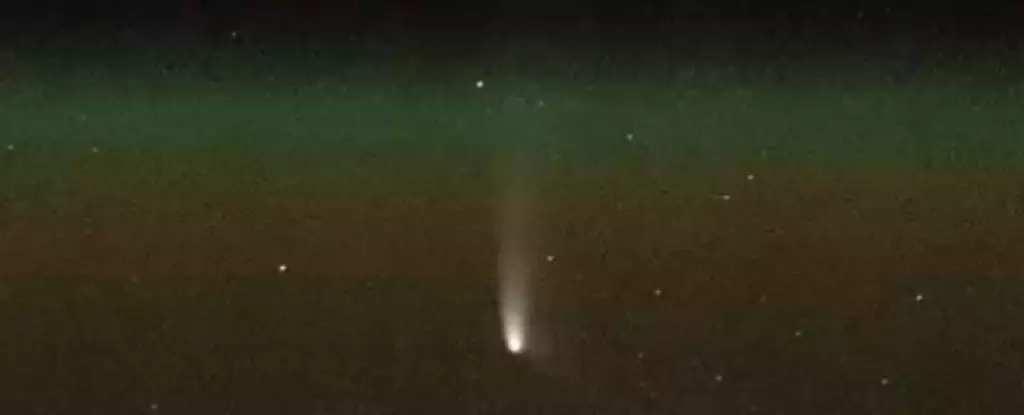In January 2023, the cosmic family welcomed a new member: Comet C/2023 A3 (Tsuchinshan-ATLAS). While the discovery of comets is regular fodder for astronomers, this particular comet appeared to shine with potential brightness that piqued the interest of both amateur and professional stargazers alike. Hyperbolic claims have arisen, labeling it the “comet of the century”. However, seasoned astronomers caution against such premature declarations. The luminous nature of comets can be notoriously unpredictable, and indeed, only time and close observation will reveal how breathtaking this new celestial guest might become.
As of now, in September 2024, C/2023 A3 has hit the morning skies of Australia and Aotearoa New Zealand, visible to those with keen sights and ideally positioned observing conditions. By utilizing binoculars, onlookers can catch a glimpse of its dusty tail streaming away from the Sun, even as its naked-eye visibility remains modest at this stage. It initially presents itself as a fuzzy star, teeming with the promise of brightness that is expected to intensify over the coming weeks.
To spot this comet, observers should strategically position themselves in the eastern sky around an hour and a half before sunrise. As the month progresses, the comet will dip closer to the horizon each morning, becoming more elusive against the backdrop of dawn light. September 27 marks an important milestone, as the comet reaches its closest approach to the Sun, a point known as perihelion, at a distance of approximately 58 million kilometers. Observers anticipate that as the comet continues its journey, its brightness could enhance, leading to an eyeful for eager stargazers.
The Spectacle of Forward Scattering
The most exciting phase of this comet’s trajectory may unfold around October 9 and 10, when it will traverse the area almost directly between Earth and the Sun. This unique positioning could catalyze a startling increase in brightness due to a phenomenon known as “forward scattering.” In simple terms, as light from the Sun passes through the comet’s dust particles, those grains closest to the light source reflect it back towards Earth, creating a surreal optical spectacle. If particularly dusty, C/2023 A3 might brightness up to 100-fold, presenting a once-in-a-lifetime, nearly daylight-visible event for those fortunate enough to be in the right place.
However, significant caution is advised. Despite the alluring prospect, hunting for the comet near the Sun is fraught with dangers, primarily the need to avoid direct sunlight. Only the most seasoned astrophotographers and astronomers may successfully glimpse the comet at such close proximity to our stellar neighbor, and those attempts should involve appropriate shielding techniques.
Post the enchanting event of being between Earth and the Sun, Comet C/2023 A3 (Tsuchinshan-ATLAS) is projected to transition into the evening skies, becoming visible in the western horizons around October 12. In the initial days following this transition, the comet will revel in the residue of forward scattering, further enhancing its visibility. However, as the comet distances itself from the Sun, this effect would gradually wane, revealing a tail that could stretch vast lengths across the night sky.
Photographers and amateur astronomers alike can expect a flurry of striking images to proliferate across social media as the comet reaches its zenith. However, as time progresses into late October, the comet is expected to fade rapidly, dwindling to a point where it may barely register against the night sky, even for those with discerning eyes. By the month’s conclusion, C/2023 A3 will embark on its retreat into the depths of the Solar System, not slated to return.
As enthusiasts tune in to witness this celestial marvel, it is essential to take a step back and remember the intrinsic unpredictability tied to comets. Recall the adage, “comets are like cats; they have tails and often surprise us.” C/2023 A3 is, by all appearances, adhering to its expected patterns of brightness and behavior so far. However, history suggests that with such proximity to the Sun, fragmentation is a possibility that cannot be dismissed outright.
If the comet were to fragment, it could erupt into a splendid display of cosmic fireworks, but such occurrences remain deeply uncertain. Conversely, C/2023 A3 might not become as radiant as anticipated, which is a fate that often befalls comets. Regardless of the outcome, the upcoming weeks promise excitement for those gazing skyward. Each night presents a new opportunity for discovery and wonder, showcasing why celestial events remain a captivating endeavor in the realm of astronomy. Whatever unfolds, the journey of Comet C/2023 A3 (Tsuchinshan-ATLAS) is shaping up to be a highlight in the astronomical calendar, drawing eyes and hearts toward the beautiful mysteries of the universe.

